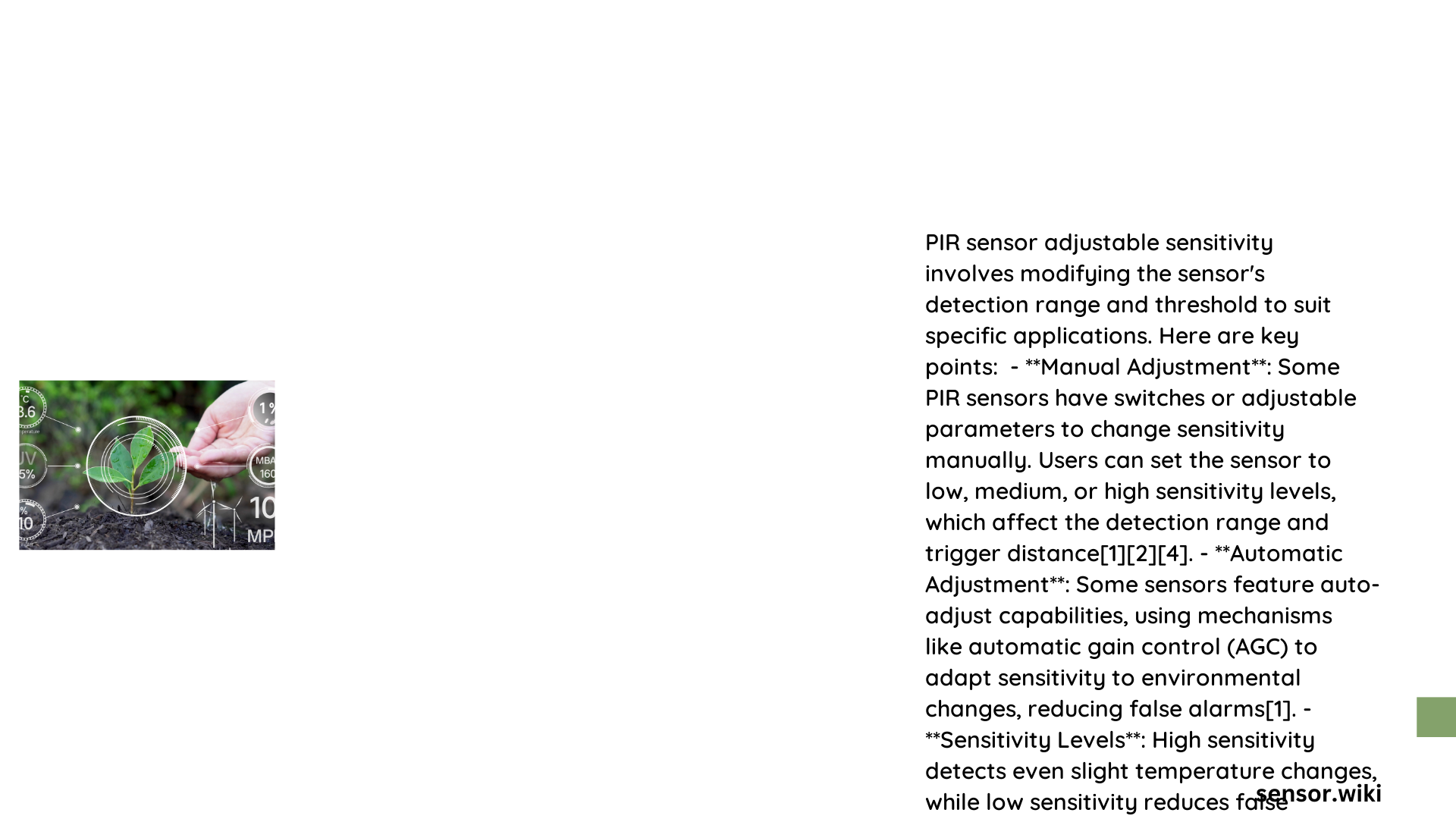PIR sensor adjustable sensitivity represents a critical technological feature enabling precise motion detection across diverse environments. By allowing users to fine-tune detection ranges and responsiveness, these sensors provide unprecedented control over sensing capabilities. Advanced models offer multiple sensitivity settings, ranging from low to high, accommodating complex spatial requirements while minimizing false trigger potentials.
What Makes PIR Sensor Sensitivity Important?
PIR (Passive Infrared) sensors detect temperature changes caused by moving objects, making sensitivity adjustment crucial for accurate performance. Different environments demand unique detection parameters, which is why adjustable sensitivity becomes a game-changing feature.
Key Sensitivity Adjustment Mechanisms
Manual Potentiometer Adjustment
- HC-SR501 Sensor
- Detection range: 3-7 meters
- Adjustment via onboard potentiometer
- 120-degree detection angle
Digital Sensitivity Control
- Smart PIR Sensors
- App-based sensitivity management
- Automatic gain control
- Digital temperature compensation
How Do Different Sensitivity Levels Impact Detection?

| Sensitivity Level | Detection Range | Typical Application |
|---|---|---|
| Low | 3-4 meters | Small indoor spaces |
| Medium | 5-6 meters | Standard room coverage |
| High | 6-7 meters | Large open areas |
Technical Calibration Process
- Environmental Preparation
- Stabilize temperature and humidity
- Minimize direct sunlight interference
-
Choose appropriate mounting location
-
Sensitivity Configuration
- Identify sensor-specific adjustment method
- Use potentiometer or digital interface
- Test and validate detection performance
What Factors Influence PIR Sensor Sensitivity?
Several critical factors determine effective PIR sensor sensitivity:
- Temperature Range: -15°C to +70°C
- Humidity Tolerance: Stable environmental conditions
- Detection Angle: Typically 110-120 degrees
- Response Time: Milliseconds to seconds
Cost Considerations
- Basic Models: $5-$10 per unit
- Advanced Smart Sensors: $20-$50 per unit
- Professional Integration: Potential consulting fees
What Are Common Deployment Scenarios?
PIR sensors with adjustable sensitivity excel in multiple applications:
- Home security systems
- Automated lighting controls
- Energy management
- Industrial motion detection
- Pet-immune alarm configurations
Best Practices for Optimal Performance
- Regular calibration
- Periodic sensitivity testing
- Consider environmental variables
- Match sensor specifications to specific use cases
How to Select the Right PIR Sensor?
When choosing a PIR sensor with adjustable sensitivity:
- Evaluate detection range requirements
- Consider environmental conditions
- Check compatibility with existing systems
- Review sensitivity adjustment mechanisms
- Assess budget constraints
Technical Specifications Comparison
| Feature | HC-SR501 | Roombanker | UC-ADJ-PIR |
|---|---|---|---|
| Sensitivity Levels | Manual | App-controlled | Adjustable |
| Detection Range | 3-7 meters | Up to 12 meters | Varies |
| Operating Temperature | -15°C to +70°C | Standard range | Depends on model |
Conclusion
PIR sensor adjustable sensitivity offers unprecedented control in motion detection technologies, enabling precise, customizable sensing across diverse applications.
